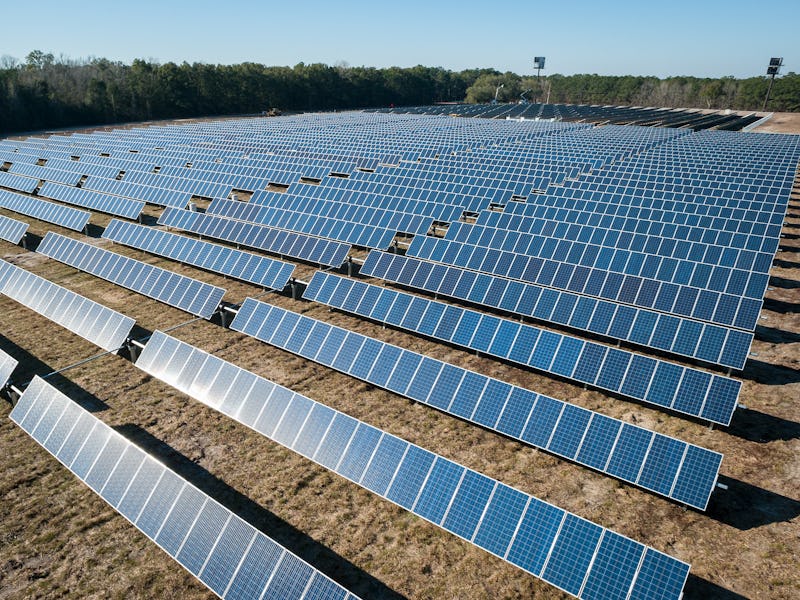Why New Solar Installations Will Reach a Breakneck Pace by 2024: Study
The rise is set to continue.

Solar power is about to reach an inflection point. A new report released on Thursday claims that installations in the United States will double in just four years’ time, thanks largely to developments in California, which accounted for around half of all installations.
This estimate is from the research group Wood Mackenzie, who along with the Solar Energy Industries Association, found that there are now more than two million photo-voltaic solar installations in the country, just three years after passing the one million mark. The teams expect this pace to increase, reaching three million by 2021 and four million by 2023.
“The rapid growth in the solar industry has completely reshaped the energy conversation in this country,” Abigail Ross-Hopper, SEIA president and CEO, said in a statement. “This $17 billion industry is on track to double again in five years, and we believe that the 2020s will be the decade that solar becomes the dominant new form of energy generation.”
The report comes as the solar industry experiences falling prices, rapid growth, and greater governmental support. Solar prices have dropped from $6.65 per watt for a residential install in 2010 to $2.89 in 2018. Installing new wind and solar is now cheaper than maintaining 74 percent of existing coal plants. Hayes Barnard, a former SolarCity executive, told Inverse this month that California’s law mandating solar panels on all newly-built homes could signal similar laws across the United States.
All these factors have helped solar panels reach new heights in terms of installations:
Number of solar installations over time.
Those two million installations now generate more than 70 gigawatts of power, the report claims, enough to power around 12 million homes. That’s still a small fraction of overall generation, as the United States’ Energy Information Administration states that only three percent of energy used in 2018 came from renewables including solar.
But those figures won’t remain low for long. The report states that in 2010, there was one installation every 10 minutes. By 2024, the rate of installations is set to have increased tenfold to reach one every minute. At that point, around 2.5 percent of all American homes will have solar panels.
The stats paint an image of a society where solar-touting homes become a regular sight, as opposed to today where they’re a fairly rare curiosity. This shift may be aided by laws similar to the one introduced in California, where all homes built after 2020 will include panels as part of the install. While it’s expected to add $9,500 to the total cost of building, Reuters reported that it’s expected to save homeowners $19,000 over 30 years.
Industry players like Barnard think that California’s mix of public and private incentives will be crucial in getting other states to adopt similar measures.
“Typically what you’ll see is California will lead the way on a lot of these green and sustainable energy efficient initiatives, and then other states will follow as they see how these initiatives are rolled out in California,” he says. “You’ll see other states adopt.”
California’s efforts in solar, which also include tax credits and net metering initiatives to incentivize buyers, have paid off. The report shows that the state accounted for 51 percent of the first million solar installations in the United States, and 43 percent in the second million. It’s currently home to 18,000 systems, a figure expected to rise to 40,000 by 2024.
The state’s success paves the way for others to follow suit. The report projects that Illinois, for example, will jump from 4,000 installations today to 100,000 by 2024. New installations in the 10 biggest solar state markets — excluding California — are set to rise from 500,000 over the past five years to 750,000 in the coming five years.
Solar’s sunniest days, it seems, are still to come.